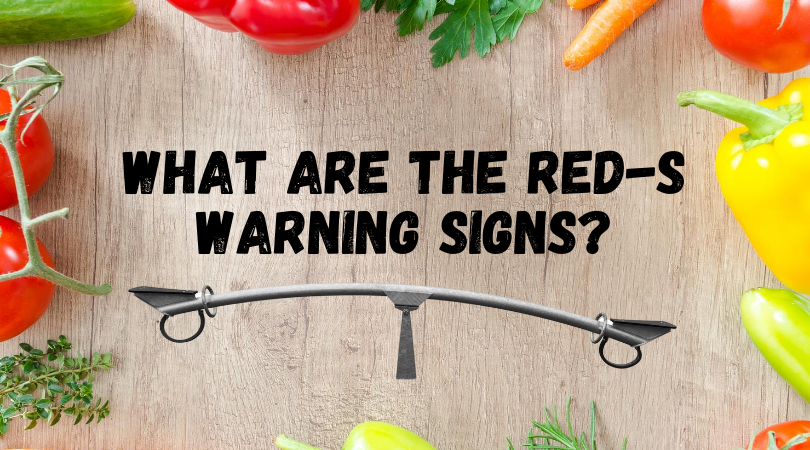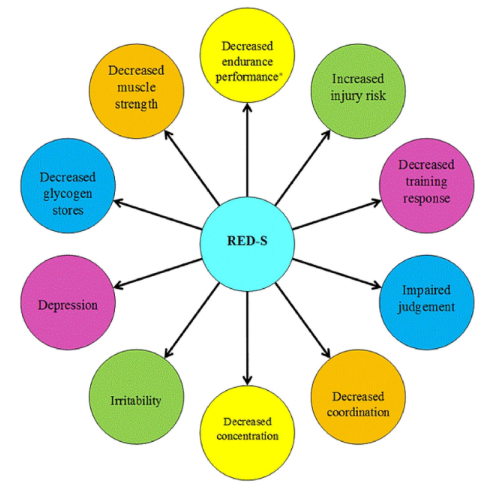What Are The RED-S Warning Signs?

What is RED-S
Previously know as the Female Athlete Triad has now evolved into ‘Relative Energy Deficiency in Sports’ which now includes males. The most well-defined example I could find came from Rebecca McConville who said:
Rebecca McConville:
“Where your energy is coming from when you are not paying the energy bills”.
In other words, you have energy reserves stored up in tissues such as your muscle, liver, bones and your body also requires energy for digestive, immune and hormone function. Even though the body needs energy to operate all these working parts, it will still prioritize physical activity above everything else for energy. Therefore, if you are not supplying your body with adequate nutrients and adequate recovery time (adding energy stores) and continue to push your body (depleting energy stores), vital functions start to break down. Simply, it’s about balancing the see-saw of energy going in (through diet) and energy going out (exercise). If your output consistently exceeds input, your body starts dipping into it’s reserves.
Signs & Symptoms of RED-S
RED-S can start as lack of energy and not feeling refreshed in the morning but then develop into mood shifts, lowed immune system, irregular menstrual cycles, stress fractures and food intolerance. However, it’s important to note that everyone will encounter individual experiences and symptoms. You don’t get stronger and faster during your workout, you get stronger during your recovery. If you do not respect this, it can effect several bodily functions.

Respect your recovery phase
Any disrespect of recovery will lead to diminished performance and risk of injury. So reflect, assess your training loads and your nutrient intake. When you starting a harder training cycle, ensure your nutrition and sleep reflect this. If the equation is not balanced, your body will start sacrificing key body functions and have an inability to recover.
Relevant Blog posts
- What Runners need to know about Bone Density
- The dangers of self-diagnosing shin pain
- Your running injury road to recovery
